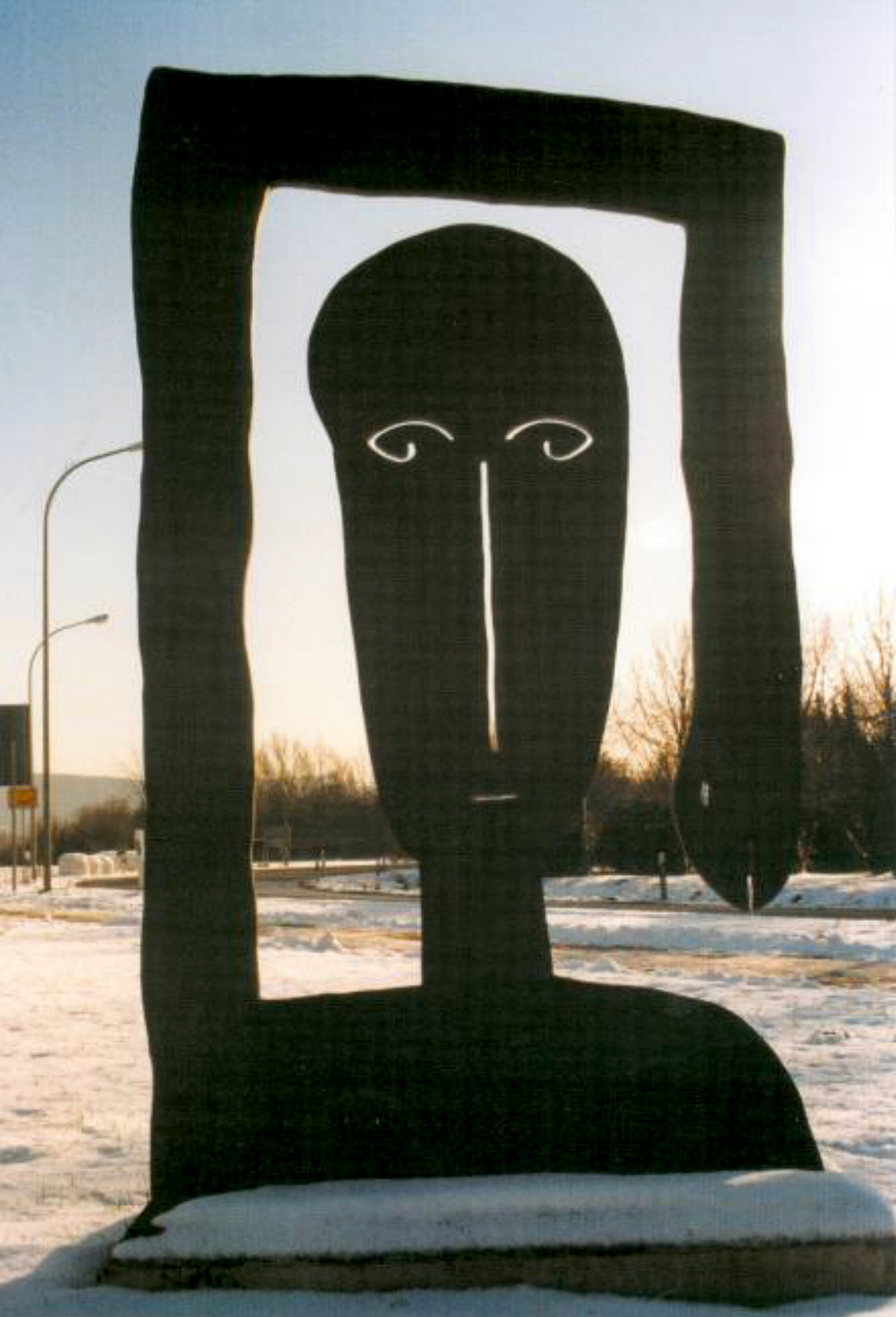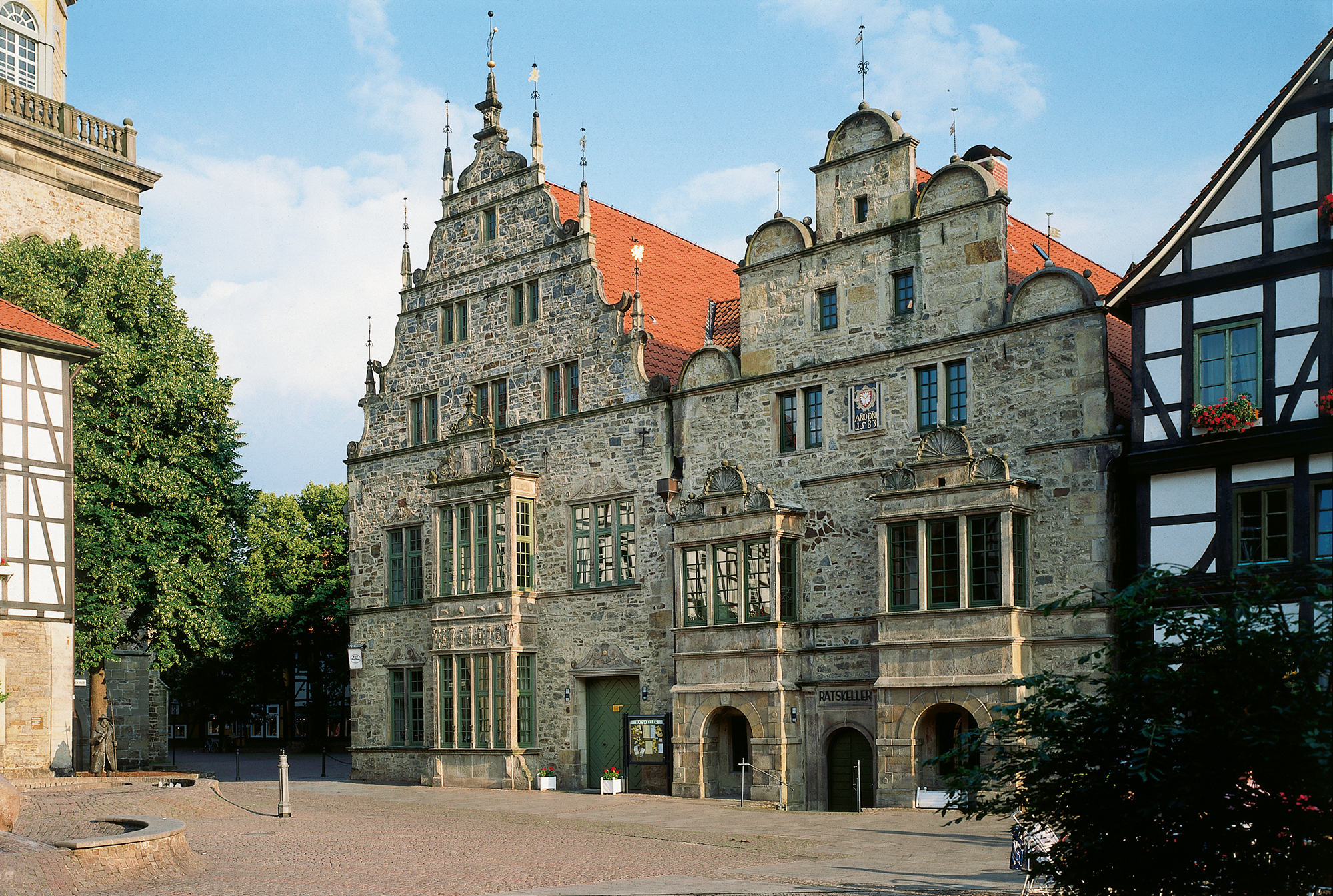-
Rinteln Open or Close
On the banks of the River Weser, Rinteln was founded in the 1230s on behalf of Count Adolf IV. of Schaumburg. Due to its centrality and its privilege to hold fairs, the town soon evolved into a regional hub of trade. In 1621 a university was established in the town. Ten years later the famous polemic pamphlet "Cautio Criminalis" was published in Rinteln, in which Friedrich Spee, a Jesuit, criticised the witch-hunting at that time. As a fortified town Rinteln served as a safeguard, protecting the Schaumburg territory, until the age of Napoleonic rule. Today the town has about 25,000 inhabitants. Rinteln's Old Town is considered the most beautiful of all in Schaumburg.
-
The Eulenburg Museum Open or Close
Klosterstraße 21
The Eulenburg belongs to Rinteln's oldest houses, but most of the present building was erected in 1591. Its name "Eulenburg" probably stems from "old castle". After a number of changes in ownership, the building became the seat of government in 1651 and housed the High Court of the Hessian County of Schaumburg. Since the end of the 1930s it has been a museum. After being totally redesigned in the 1990s, the Eulenburg Museum now focuses on the history of Rinteln and interesting special exhibitions. The museum is open from Tuesday to Sunday between 2pm and 5pm. Adults pay an entrance fee of 3 €, children 1.50 €.
-
Art in Public Space Open or Close
For many years Rinteln's town council has promoted art in public space. Particularly the sculptures by Eg Witt are renowned. At Seetorstr. 20, his sculpture "Armformer" can be seen, which is a reaction to the nuclear catastrophe in Chernobyl in 1986. At Klosterstr. 5, another interesting piece of art called "Erdfenster" (earth window) can be found, which is a hole in the ground in which shimmering lumps of glass from the Stoevesandt glassworks are presented. Furthermore you can see a sculpture by Eg Witt called "Combine" at Am Pferdemarkt. At other places all over the town you can discover comtemporary works of art.
- Old Town Hall Open or Close
-
Möllenbeck Monastery Open or Close
Am Kloster
Stift Möllenbeck is one of the most spacious monastery complexes in Germany from the end of the Middle Ages. The hall church is one of the most important late-Gothic monuments in the Weser area. From the 15th century Möllenbeck was an Augustinian monastery, later a secular canonical institution. In the days of Napoleon, however, the church was used as a horse stable. Later, things took a turn for the better, though, when the Reformed Church refurbished the church building in 1836. In recent years, the Reformed parish has renovated the enclosure buildings, which are now used as a leisure and recreation centre.
- St. Sturmius (Roman Catholic church) Open or Close






